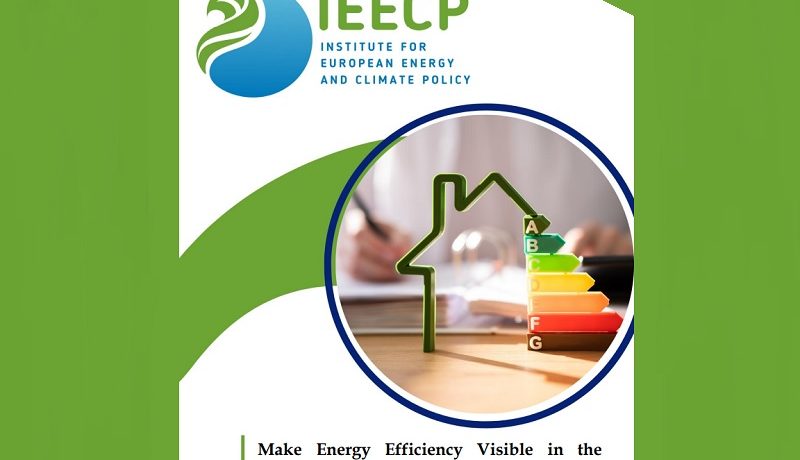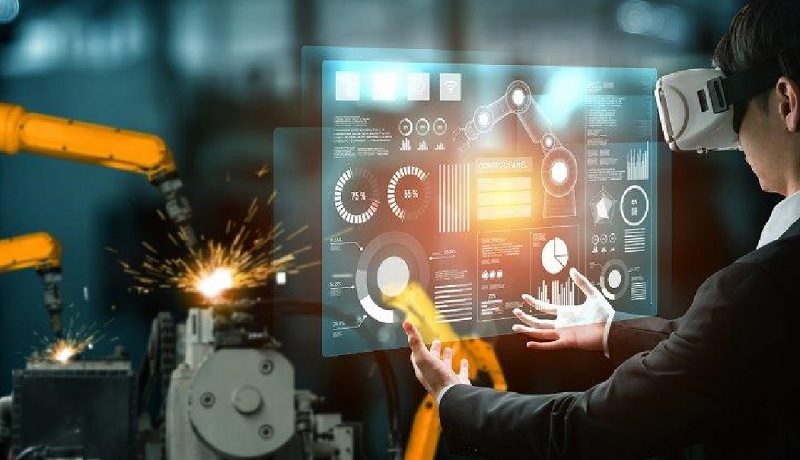Dicembre 2023
Energy Efficiency in the Energy Mix: it is the first fuel for a clean energy future – but not yet visible in the energy mix!
The new Energy Efficiency Directive, adopted last July 2023, enforces the principle of “energy efficiency first” as a fundamental principle of the EU’s energy policy, reflecting the importance that the EU attaches to energy efficiency.
Energy efficiency is considered a core strategy for decarbonisation
A recent report by the IEA estimates that the energy efficiency sector will provide 40% of the necessary greenhouse gas cuts expected worldwide by 2040. A new study by IEECP, “Make Energy Efficiency Visible in the Energy Mix”, outlines the need for energy efficiency to be fully considered as an energy resource, starting with integrating it in the way to represent the energy mix.
Energy efficiency is a resource that we can use to meet our energy needs while consuming less energy. In doing so, we can reduce our energy bills, our dependency on imported fossil fuels, and our CO2 emissions. It has many benefits but is not yet at the forefront of the energy mix at the EU or national level. The energy efficiency share is not included in data representing the energy mix, and therefore, is not a visible component in the energy mix. Out of sight, out of mind: this is one of the reasons energy efficiency does not come first in planning, policymaking, and investment. The new Energy Efficiency Directive has now entered into force and the EU has a stronger legal framework to support energy savings. Looking forward to next year as new European institutions will take office: what should we do to ensure energy efficiency is prioritised and made more visible in the next EU cycle?
Making energy efficiency visible
The IEECP study, supported by Knauf Insulation and the European Climate Foundation, addresses the issue of visibility of energy efficiency in the main publications on energy data. The study highlights how the contribution of energy efficiency is essential to the European Union’s energy system but is not currently visible in the main energy mix figures. Researchers analysed possible ways to add energy savings to national and European Union energy mixes next to energy sources such as renewables, gas and coal in a structured way: 7 actions are listed in the report.
For energy efficiency to be considered on a level playing field with other energy resources, energy efficiency improvements need to be monitored, then energy efficiency data needs to be integrated in the overall energy picture.
“Energy efficiency is considered the first fuel because there is no cleaner and cheaper energy than one that has not been consumed. However, energy efficiency is consistently absent from energy balances which makes it difficult for energy savings to become part of energy strategies. This study redresses that balance by demonstrating the significant contribution that energy savings make to energy mixes along with renewables, gas and coal”, says Katarzyna Wardal-Szmit (Knauf Insulation’s EU Public Affairs Manager).
The fundamental goal of including energy efficiency data into the main energy figures is to keep energy efficiency at the forefront of the broader energy debate.
The study puts energy efficiency back into the energy mix equation.
“The findings provide policymakers and market players with the insight they need to change the perspective on energy systems and give energy efficiency the prominence it deserves in cost-effective and sustainable energy strategies” adds Jean-Sébastien Broc (IEECP researcher and consultant).
More about the study
– The study demonstrates how energy savings can be calculated and better represented to show their critical role in the energy mixes of the European Union and Member States
– It examines how energy efficiency is represented in publications by organisations such as Eurostat, the European Environmental Agency and International Energy Agency and found that when it came to the headline figures of these publications “the quantitative contribution of energy efficiency to the energy mix was missing in the main pictures of the energy balance” while energy efficiency was often included in last chapters or separate reports.
– It integrates 2021 ‘energy savings’ data from the ODYSSEE-MURE project — which has been tracking energy efficiency indicators and strategies in Europe for over 30 years — with Eurostat data on ‘supply’ energy carriers like oil and gas for the EU’s 27 member states.
– It recommends a set of 7 actions to make energy-efficiency more visible, such as for organisations in charge of publications on energy data to charts showing the energy efficiency share next to the shares of the other energy carriers (see figures below). Public authorities and implementing agencies could ensure that results from energy efficiency policies are published on a regular basis as well as monitor and publish the achievements related to major objectives, such as the renovation of the building stock. Energy efficiency experts and stakeholders could complement the regular energy efficiency data with ad-hoc studies providing evidence and key figures about the multiple impacts of energy efficiency, to link the impacts of energy efficiency with what is in the top of the policy priorities (e.g. reducing energy imports).
IEECP is a non-for-profit, independent research foundation working, since 2015, on science-based climate change mitigation, energy efficiency and renewable energy policy, with an international interdisciplinary team of experts generating and disseminating scientific knowledge. We work closely with EU institutions, international organisations, national, regional and local governments, think-tanks, NGOs, academics and the business world to lead the transition to climate neutrality and to a sustainable energy future for various sectors. We build valued partnerships with renowned organisations from across Europe as we believe collaboration and creating a community helps carrying our ideas and results further, to shape, together, a low-emissions, resilient future.
– BYinnovation is Media Partner of IEECP
Industria 5.0 opportunità e impatti sociali: una nuova era in cui la tecnologia e l’umanità si fondono in modo armonico, creando un equilibrio tra efficienza e valori umani, puntando a sviluppare strategie per costruire processi produttivi flessibili ed efficienti.
Vantaggi per le aziende, le possibili problematiche e il ruolo dell’Italia nella transizione 5.0
Come è possibile agire contemporaneamente su tutti i seguenti fronti?
Aumentare l’efficienza operativa, ottenere una maggiore flessibilità nella produzione, personalizzare in modo avanzato i prodotti e migliorarne la qualità, ridurre i costi di produzione e l’impatto ambientale, ottenere una maggiore competitività globale, migliorare la sicurezza sul lavoro, creare nuove opportunità di lavoro ad alta qualità e un’accelerazione dell’innovazione tecnologica.
La risposta è l’industria 5.0, un modello collaborativo che fa parte dell’evoluzione delle industrie manifatturiere e che si basa sull’integrazione di tecnologie avanzate come l’Internet of Things (IoT), l’intelligenza artificiale (IA) e la robotica collaborativa per creare ambienti di produzione altamente digitalizzati, flessibili ma anche attenti alla componente umana.
Cosa è Industria 5.0
“Industria 5.0” è il titolo del rapporto che la Commissione Europea ha pubblicato a gennaio 2021. Definita come un “completamento dell’industria 4.0”, è una rivoluzione culturale che ricolloca l’industria nella contemporaneità in cui agisce.
L’Industria 5.0 si caratterizza per un approccio centrato sull’uomo, in cui la tecnologia, compresi robot collaborativi avanzati, serve a migliorare la qualità della vita dei lavoratori e dei cittadini. La sostenibilità è un altro pilastro, con un forte impegno per ridurre gli sprechi e utilizzare le risorse in modo efficiente. Inoltre, l’Industria 5.0 si distingue per la sua resilienza, grazie alla capacità di adattarsi rapidamente ai cambiamenti e garantire continuità operativa tramite l’analisi avanzata dei dati e l’apprendimento automatico.
Sono sei le categorie di tecnologie abilitanti per l’industria 5.0:
– integrazione uomo-macchina individualizzata;
– tecnologie bioispirate e materiali intelligenti;
– Digital Twins e simulazione;
– tecnologie di trasmissione, archiviazione e analisi dei dati;
– intelligenza artificiale;
– tecnologie per l’efficienza energetica, le energie rinnovabili, lo stoccaggio e l’autonomia.
Queste sono le tecnologie che l’Industria 5.0 sfrutterà per affrontare le nuove sfide dettate dalla società e dall’ambiente e per porsi come motore della prosperità in favore di tutti gli stakeholder coinvolti.
Opportunità e impatti sociali derivanti dall’Industria 5.0
L’Industria 5.0 apre una serie di opportunità significative. Queste includono l’innovazione continua nei prodotti e nei processi, la promozione della crescita economica, la creazione di nuovi posti di lavoro di alta qualità, una produzione più sostenibile, la possibilità di offrire prodotti personalizzati su vasta scala, un miglioramento della sicurezza sul lavoro, l’uso di tecnologie avanzate per la formazione dei lavoratori e una maggiore resilienza aziendale, in grado di affrontare meglio le perturbazioni di mercato e le situazioni di emergenza.
Di contro, vi sono anche paure comuni come la possibile perdita di posti di lavoro.
L’Industria 5.0 potrebbe automatizzare sì alcuni cosiddetti “lavori routine” ma, al contempo, creerebbe nuove opportunità lavorative che richiederanno un’interazione uomo-macchina.
Industria 5.0 è il paradigma europeo su cui anche l’Italia sta per avviare un grande programma di supporto per agevolare la «transizione 5.0» del sistema produttivo con investimenti per oltre 4 miliardi di euro.
La transizione 5.0 è il passaggio verso un modello industriale avanzato e centrato sulla tecnologia, dove l’adozione delle tecnologie digitali come l’IoT, l’IA e la robotica migliora l’efficienza, la sostenibilità e la personalizzazione dei processi produttivi. Questo cambiamento richiede anche una revisione delle pratiche aziendali e una maggiore attenzione alle esigenze umane. In sostanza, è il passo verso un’industria altamente digitalizzata e orientata al futuro.
“Come già avvenuto nel corso della quarta rivoluzione industriale il ruolo di TÜV Italia sarà quello di attestare, attraverso il rilascio di una perizia, che i beni, la loro installazione e interconnessione siano conformi a quanto previsto dai requisiti legislativi al fine di avere diritto al beneficio fiscale messo a disposizione”, afferma Alberto Macchi, Business Unit Manager Div. Industrie Service di TÜV Italia. “Ad oggi non è ancora possibile determinare quali saranno le modalità di incentivazione che verranno previste dal Governo per sostenere il Piano Transizione 5.0; sicuramente gli incentivi per le Imprese dovranno essere concretizzati da appositi decreti o, comunque, dalla Finanziaria 2024.”
L’Industria 5.0 vuole rappresentare un nuovo modello in cui la tecnologia e l’umanità si fondono in modo armonico, creando un equilibrio tra efficienza e valori umani. È una visione dell’industria che non solo mira alla produttività, ma anche al benessere degli individui e al rispetto dell’ambiente. A differenza dell’Industria 4.0, che si configurava come una vera e propria rivoluzione industriale e tecnologica, Industria 5.0 è soprattutto un nuovo paradigma culturale.
Fondato nel 1866 come associazione di controllo delle caldaie a vapore, il Gruppo TÜV SÜD è cresciuto diventando un’impresa globale. Opera con oltre 25.000 dipendenti dislocati in oltre 1.000 sedi in circa 50 paesi allo scopo di migliorare costantemente tecnologia, sistemi e competenze. TÜV SÜD contribuisce attivamente a rendere innovazioni tecniche come Industria 4.0, guida autonoma ed energie rinnovabili sicure e affidabili.
TÜV Italia fa parte del gruppo TÜV SÜD ed è presente in Italia dal 1987. TÜV Italia ha una struttura di oltre 700 dipendenti e 400 collaboratori, con diversi uffici operativi sul territorio nazionale, a cui si affiancano i laboratori TÜV Italia e Bytest a Volpiano (TO) e pH a Barberino Tavarnelle (FI), acquisite rispettivamente nel gennaio 2012 e nel gennaio 2013.
TÜV Italia organizza webinar e seminari gratuiti, in cui vengono affrontati i temi tecnici più attuali, oltre alla certificazione delle persone e ai numerosi corsi formativi professionali dedicati ad approfondire e sviluppare competenze in tutti i settori in cui l’ente opera.



